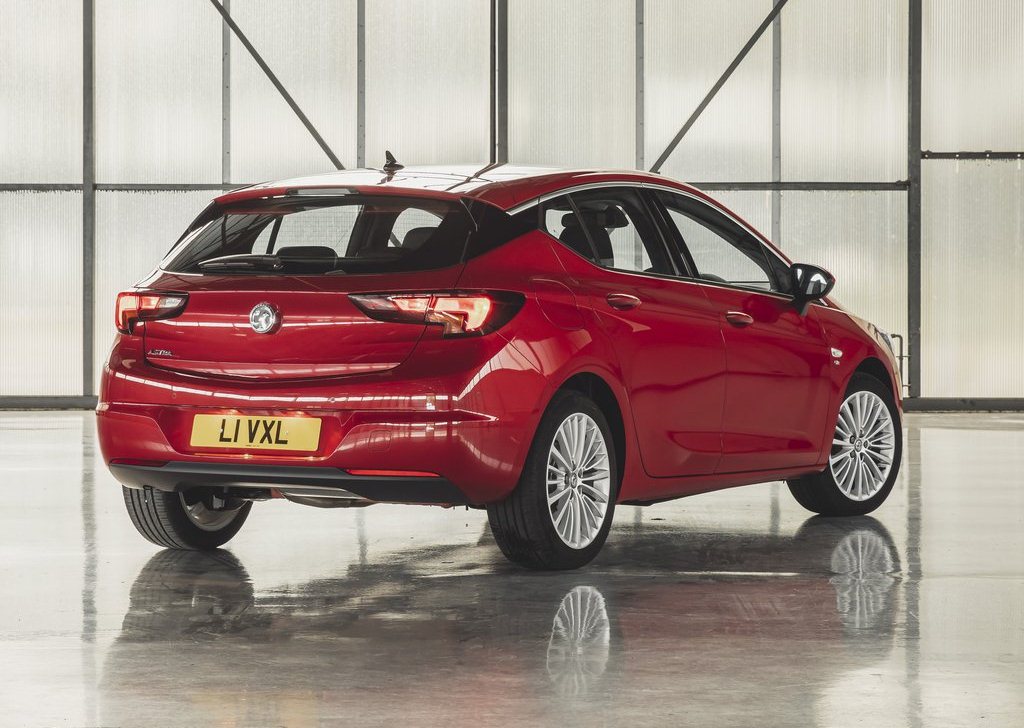One of the UK's top-selling and best-loved cars, Vauxhall Astra is a household name for British car buyers with over three million sold in the UK over the last 40 years, including over 30,000 in 2018. More than 25 per cent of British motorists have either owned or driven an Astra, so reaction to a model with significant revisions will always be felt across the market.
The new Vauxhall Astra sets the standard for efficiency and low emissions with an all-new range of petrol and diesel powertrains. Building on the wide success of the outgoing model, customers will benefit from reduced CO2 and fuel consumption, as well as a series of class-leading technology and equipment.
POWERTRAINS
The new turbocharged petrol and diesel engines, which are as economical as they are lively, are primarily responsible for a marked improvement in Astra's efficiency. The low consumption and CO2 figures are also thanks to the Vauxhall Astra's six-speed manual gearboxes, the seven-speed continuously variable transmission (CVT) and - for the first time at Vauxhall - a new nine-speed automatic.
The compact, three-cylinder, turbo petrol units are available with 1.2 and 1.4-litre displacements. With the new 1.2-litre petrol engine, the Astra achieves a 6kg weight loss versus the outgoing 1.4T (150PS) engine. With power outputs extending from 110PS to 145PS and maximum torque from 195Nm to 236Nm, they achieve an excellent balance between performance and efficiency. The Astra 1.2-litre is combined with a smooth-shifting six-speed manual gearbox while the Astra 1.4-litre is available exclusively with a new seven-speed CVT. With the CVT, Astra drivers can enjoy the convenience of automatic gear changing or select gears themselves via the shift lever.
Diesel Engines
The Vauxhall Astra's 1.5-litre, three-cylinder diesel engines offer 105PS and 122PS, as well as 260Nm to 300Nm of torque. The common rail fuel injection system operates at up to 2,000 bar. As an alternative to the standard six-speed manual gearbox, the most powerful diesel is available with the option of a smooth-shifting new nine-speed automatic transmission, which is makes its debut in the new Astra.
The new diesel engines feature an electrically-activated turbocharger with variable geometry turbine vanes and, like their petrol counterparts, a balance shaft in the block for additional refinement. Likewise, the exhaust manifold is also integrated in the cylinder head. Optimum exhaust after-treatment of the Astra 1.5 diesel is delivered by the emissions reduction system consisting of a passive oxidation catalyst, AdBlue injector, SCR catalyst and Diesel Particulate Filter.
ADVANCED DRIVER ASSISTANCE SYSTEMS AND CONNECTIVITY
The new Vauxhall Astra is available with a new digital front camera, which is both smaller and more powerful than before thanks to a faster processor. It now not only recognises vehicles, but also pedestrians, greatly improving safety. Furthermore, thanks to the high-resolution camera, traffic sign recognition can now process even more traffic signs and show them as symbols on the display. The digital rear view camera, available on selected models, is also more powerful, and works in conjunction with the new Multimedia Navi Pro infotainment system. The view of the traffic behind the vehicle on the monitor is more distinct and precise, while the contrasts are more visible in the dark.
Astra customers will enjoy high levels of connectivity with the smarter, faster and more intuitive Multimedia Radio, Multimedia Navi and Multimedia Navi Pro systems. All systems are compatible with Apple CarPlay and Android Auto without the need for the customer paying expensive subscriptions. The top-of-the-line Multimedia Navi Pro - already featured in the Vauxhall Insignia flagship - has an eight-inch colour touchscreen and can also be operated by voice control. Connected navigation services with real-time traffic information and online map updates make the journey more relaxed, while the navigation display itself appears with redesigned symbols in a fresher, more modern look. The same applies to the instrument cluster, which features a new digital speedometer.
AERODYNAMICS
With an impressive drag coefficient of 0.26, the new Vauxhall Astra is leads the class for aerodynamics. The aerodynamic design of the Astra plays a vital role in the challenge to reduce CO2 emissions. By reducing drag, and therefore also fuel consumption and emissions, Vauxhall is helping customers and fleet managers to achieve significant cost savings while promoting efficient driving. In total, the aerodynamic developments of the new Vauxhall Astra save 4.5g of CO2 per kilometre (in accordance with the WLTP cycle).
Key to the aerodynamic design of the new Astra is the active full-face shutter. The upper and lower portions of the grille can be opened and closed, even independently from each other, resulting in highly efficient driving under a variety of real-life conditions. For example, a ten per cent cut in drag results in a fuel consumption reduction of around two per cent in the New European Driving Cycle (NEDC), or up to five per cent when driving at 70mph. The reduction in drag achieved by the full-face active shutter alone lowers CO2 emissions of the new Vauxhall Astra by up to 2.0g/km.
Source: Vauxhall


















![2026 Kia Sportage [EU] Review: A Refined European Crossover with Bold Style and Electrified Options](https://blogger.googleusercontent.com/img/b/R29vZ2xl/AVvXsEgqMRwJE1m90uCMgRSB6oc4bAzmAaKXJlNoCwavK5fXHaphLYY1sUVXdxUC94zuj95CdjDG2SqRnUBYMqta-dapTLIaHhzEdJAS821ldVMQOKfAZNpQlZ5fYTwKzKbKj8ad9QeKlaQPcNLRZ6zaGvuXhsg1kQ6zQCQqYtjmOM8q9u-a7Nl3WYjp773OLXJR/w680/2026%20Kia%20Sportage%20%5BEU%5D_01.jpg)



0 Comments